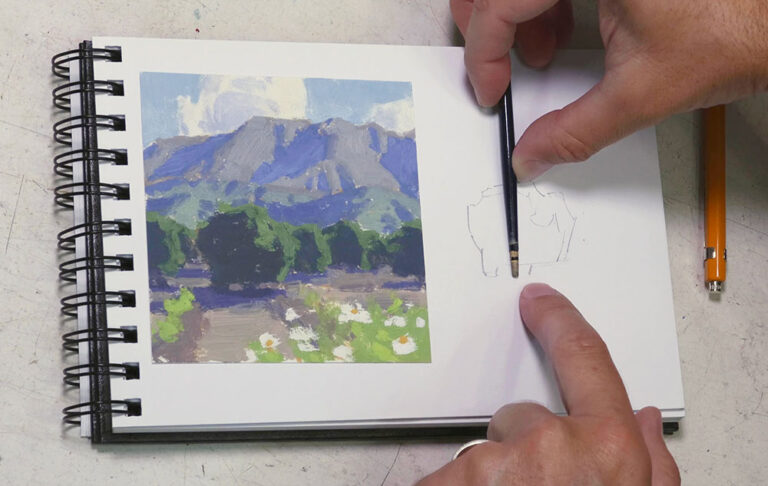
In order to train our eyes, we must first show them what is accurate. When I was learning to draw and was practicing portraits from life, I had a tendency to make certain mistakes repeatedly. One example: my portraits would always have too much distance between the nose and the mouth. In fact, I didn’t even recognize the error until a teacher pointed it out to me. My mind thought that distance in my drawing looked correct even though it wasn’t.
To fix my tendency, I had to measure closely to compare that distance to other distances on the model. Then I had to make sure I was carefully true to that comparison in order to draw accurately. As I put this into practice for several drawing sessions, the correct distance looked too small to me. But slowly, my eyes started to recognize the correct distance as being correct.
So how does one go about measuring? The idea is to compare two distances on the subject (often a horizontal distance compared to a vertical one), find a relationship between the two, then apply that same relationship to the drawing.
Imagine a portrait model for example. Let’s say that I discover that the horizontal width of the model’s head equals the same visual measurement as the vertical distance between the model’s chin and hairline. (I use a long-handled paintbrush to measure with, held at arms length.) Once I have made this comparison on the model, I make sure that the same relationship is true on my drawing (head width = distance from chin to hairline). If it isn’t, I adjust the drawing then double-check the measurement.
It’s helpful to remind yourself to measure extensively at first until it becomes a natural part of your process. And as your accuracy improves with practice, you’ll see how helpful measuring can be.
If you want to learn more, check out the Measuring Lesson in Chapter 3 of my Landscape Painting Fundamentals Course — a video series available through Sentient Academy.
